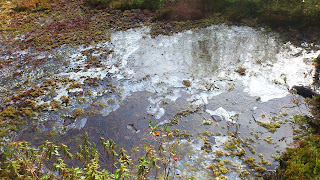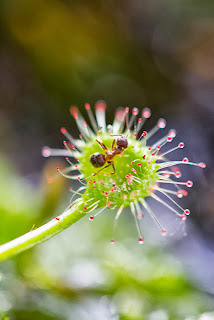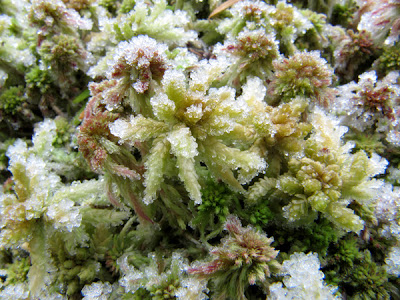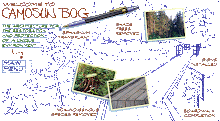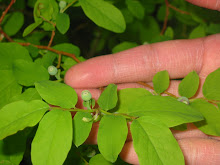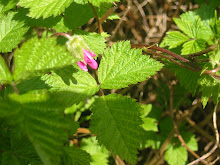Wednesday, December 18, 2013
Saturday, November 23, 2013
Friday, November 1, 2013
Work party canceled Nov 2
"The best laid plans of mice and men sometimes go astray."
Looks like the weather is not going to cooperate for us tomorrow. I thought that maybe the wind would blow really hard and most of the rain would have passed over Vancouver by tomorrow morning. No such luck.
Take a rest tomorrow and sleep in late. Hopefully the weather will be better for next Saturday.
Gerry
sent from my phone
Work Party
Thanks to all 34 volunteers who came out last Saturday and worked really hard getting all the invasive vegitation removed from the bog. A thanks also to our partners at Metro Van. Parks who provided the bin, wheelbarrows and the staff who assisted in cutting up the branches so they all fit in the bin.
"A job well done!"
Looks like fall/winter weather will be with us this Saturday! The rain fattens up the mosses and give them their vibrant red,rust, brown and green colors. Our long warm summer and fall have caused some of our plants to think it is spring. A number of the Kalmia and Oval leaf blueberries have begun to bloom. Fall is a lovely time in the bog.
We may get some more sphagnum moss planted this Saturday and there is always more areas needing to be cleared of Salal and other invasives. We need to remove more peat from the N/W area where we plan to restore the area with various different sphagnum mosses.
There is always weeding needing to be done. It will probably be wet in the bog so come dressed appropriately.
See you Saturday.
Gerry
Wednesday, October 16, 2013
Join us for Bin Day on October 26, 9:30
Come out to flex some muscles at the local bog "gym". We guarantee a heart pumping, muscle building workout hauling stumps, salal, and blackberry! BYO mug for a draft of hot tea with baked goodies as we celebrate slaying a huge pile of invasive species! Rain or shine! LOCATION: 19th ave and Camosun St, Vancouver. |
Friday, October 11, 2013
Camosun Bog Work Party, Sat. Oct.12, 9am -12 noon
Saturday, October 5, 2013
Camosun Bog Work Party, Sat. Oct. 5th, 9 am - 12 noon
Hi Crazy Boggers:
Although the weather did not cooperate last Saturday we had an enjoyable time with the Underhill family reminiscing about Denis and enjoying tea and treats. (See the attached pictures)
"I could see Denis reaching for the butter tarts, his favorite treat ."
This Saturday we will be planting sphagnum moss in the small area we lowered over the past few weeks. There is still weeding that needs to be completed, if it is not too wet and polytrichum to be removed in a number of areas.
Looks like the weather is going to cooperate so hope to see you in the bog on Saturday.
Gerry
|
Wednesday, October 2, 2013
The Inconspicuous Carnivore of Camosun Bog - by Sara Mimick, Museum Interpreter, Beaty Biodiversity Museum
When visiting Camosun Bog you might hear or catch a glimpse of a few cagey carnivores that love to eat insects, such as the Pacific tree frog (Pseudacris regilla), Northwestern salamander (Ambystoma gracile) or a variety of bird species that inhabit the Bog. However, there is one living organism, that, even though it grows in plain sight, you might never guess, it also ensnares and digests insects as prey. This inconspicuous carnivore is a flowering plant, or angiosperm, called the Round-leaved sundew (Drosera rotundifolia). The Round-leaved sundew is a common sundew species found across British Columbia in bogs, marshes, fens and other wet habitats where the soil is poor in nutrients, especially nitrogen. The sundew has adapted to these habitats by finding needed nutrients elsewhere, in particular from the strange yet fascinating and important world of insects. The Round-leaved sundew mainly feasts on midges, gnats and mosquitoes; however, it has the ability to digest insects the size of small flies and ants. The small and rounded leaves of the Rounded-leaved sundew grow in a basal rosette formation. These leaves are equipped with hairy tentacles called laminae. The laminae are stalked with sweet, sticky mucilage that appears like morning dew and attracts tasty insects. Once the insect is trapped, the sundew secretes various enzymes that digest and extract a form of nitrogen and other nutrients from the soft parts of the insect’s body. Many people are aware of other carnivorous plants, such as the Venus flytrap (Dionaea muscipula) or Pitcher plant (Nepenthes spp.); however, these plants are not native to the Lower Mainland, British Columbia. The Round-leaved sundew is local, found right here in UBC’s own backyard in Camosun Bog. Camosun Bog is an unfamiliar and open ecosystem that dates back to 2,000 years ago. Its characteristics components consist of sunlight, nutrient-poor soil and sphagnum moss. Now is an excellent time to view the Rounded-leaved sundew in Camosun Bog as its dew-like mucilage shimmers in the summer sun and its white, five-petalled flowers are blooming. Camosun Bog is located in Pacific Spirit Regional Park at the corner of W 16th and Camosun Streets. When you visit the Bog, make sure to explore the other weird and wonderful plant species of this ecosystem as well as the sundew, including the 13 different species of Spagnum mosses (Sphagnum spp.), Labrador Tea (Ledum groenlandicum), and the Arctic starflower (Trientalis europaea), to name just a few. These species are largely accessible to visitors because of a group of highly-dedicated volunteer nature-lovers, the Camosun Bog Restoration Group (also known as the Crazy Boggers). Since the early 1990s, the Camosun Bog Restoration Group has worked with Metro Vancouver park management and the Pacific Spirit Park Society to restore the Bog. You can also experience a piece of Camosun Bog at the Beaty Biodiversity Museum on campus at 2212 Main Mall. Susan Chung of the Camosun Bog Restoration Group generously loaned the Museum a mini piece of the bog for public access and education. This mini bog displays some of Camosun Bog’s amazing plant species, including the Round-leaved sundew, Labrador tea, Bog laurel (Kalmia microphylla ssp. occidentalis), Bog cranberry (Oxycoccus palustris), Oval-leaved blueberry (Vaccinium ovalifolium) and the Arctic starflower. --This article was first published in The Campus Resident Magazine Volume 4 Issue 8, August 19, 2013 |
Saturday, September 28, 2013
Sunday, September 22, 2013
Where the Wild Things Are Teacher Pro-D 2013 Registration is opening
Click here to register for our third annual outdoor pro-D where we equip teachers and youth leaders to interpret an urban bog in the outdoors.
Saturday, September 21, 2013
Sundews made seedheads
Our sundews now have brown seedheads on slender stalks and the carnivorous leaves will eventually die off for the winter. Ground level was lowered in today's work party. And we continued to remove polytrichum. |
Friday, September 20, 2013
Wednesday, September 11, 2013
Douglas Squirrels In Camosun Bog
Saturday, June 29, 2013
Denis Underhill
We learned so much from him. He was a first rate naturalist and enjoyed sharing his knowledge with us. He was one of the most observant people I have ever met. He discovered the Camosun blueberry in the bog – a variant of oval-leaf blueberry that was always in the bog but had not been noticed before.
 |
| Denis enjoying tea break |





